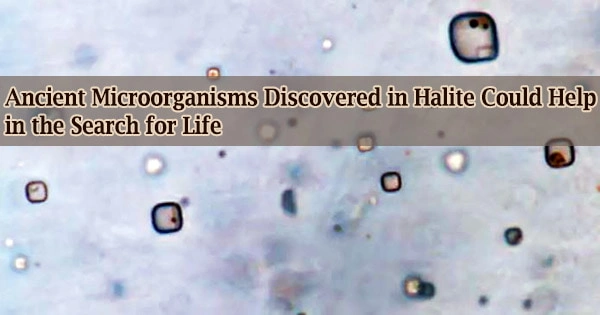Organic solids and liquids are found in primary fluid inclusions in bedded halite from the 830-million-year-old Browne Formation of central Australia, as evidenced by transmitted light and UV-vis petrography.
These objects are similar in size, form, and fluorescence reaction to prokaryotes and algal cells, as well as organic compound aggregates.
This finding demonstrates that microorganisms from saline depositional settings can survive hundreds of millions of years in halite and can be discovered in situ using only optical methods.
This research has significance for both terrestrial and extraterrestrial chemical sedimentary rocks in the hunt for life. In saline surface waters, halite crystals capture parent water in primary fluid inclusions as they grow.
They can trap any particulates in the water near/on the crystal face in addition to the parent waters. Tiny crystals of evaporite minerals or organics are among the solids.
Prokaryotic and eukaryotic organisms, as well as chemical substances like beta carotene, have been found in contemporary to Permian halites in previous investigations.
Organic content in initial fluid inclusions in 830-million-year-old halite is identified and documented using non-destructive optical techniques.
The Geological Survey of Western Australia provided core samples from the Neoproterozoic Browne Formation to Sara Schreder-Gomes, Kathleen Benison, and Jeremiah Bernau.
The halite was well maintained, allowing them to examine crystals from 10 different halite beds at different depths. To identify primary fluid inclusions and their contents, they used UV-visible light petrography and transmitted light petrography.
Based on their size, structure, and fluorescence reaction to UV-visible light, the researchers discovered that solids trapped in fluid inclusions were consistent with prokaryotic and eukaryotic cells, as well as chemical substances.
This research supports the use of non-destructive optical technologies as a first step in looking for biosignatures in chemical sediments. The petrographic context of fluid inclusions is crucial for establishing that the contents of fluid inclusions are original parent waters and thus the same age as the halite.
This research also reveals that microorganisms can be retained for millions of years in fluid inclusions in halite, implying that comparable biosignatures could be found in chemical deposits from Mars.





